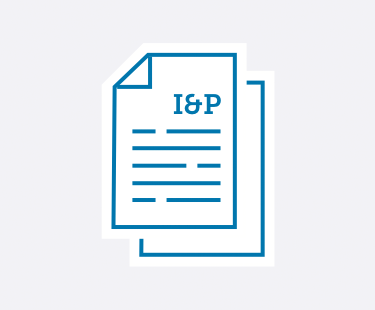

Learn practical strategies to handle emerging trends and leadership challenges in private schools.
No matter if you’re a School Head, Admission Director, Development Director, Board member, or any other private school administrator—Ideas & Perspectives®, ISM’s premier private school publication, has strategic solutions for the pervasive problems you face.
- Tuition not keeping pace with your expenses? In I&P, explore how to use strategic financial planning to create your budget and appropriately adjust your tuition.
- Enrollment dropping off? Discover how to implement the right admission and enrollment management strategies that engage your community—and fill your classrooms.
- Trouble retaining teachers? Learn how you can best support your teachers using ISM’s Comprehensive Faculty Development framework. Your faculty members will become more enthusiastic about their roles—which ultimately improves student outcomes.
- Fundraising campaigns not as successful as you’d hoped? Implement ISM’s practical advice and guidance to build a thriving annual fund, construct an effective capital campaign, and secure major donors—no matter your community size or location.
- Not sure how to provide professional development—for you and your staff? Learn ways to develop and fund a successful professional development strategy. You can improve teacher-centered satisfaction and growth, which in turn strengthens student-centered learning.
- Problematic schedule? You can master the challenges of scheduling with the help of ISM’s practical advice, based on our experience with hundreds of schools and our time-tested theories.
- And so much more.
I&P has shared targeted research, up-to-date insight, and sound theory with school leaders since 1975. More than 8,500 private school decision-makers find the answers to their schools’ administrative and governance matters in our advisory letter. We give you the strategic answers you need.
As an ISM Silver or Gold member, you not only receive issues online and in print 10 times a year, but you have access to 900+ articles in our web archive. Need help? It’s at your fingertips! Learn more and sign up for ISM's membership here.
Search
See the articles from our latest issue of Ideas & Perspectives.
Appropriate Tuition Adjustment: Recasting Financial Figures, 2015–16
Volume 40 No. 11 // September 9, 2015
Each fall, ISM publishes a set of conversion factors to simplify recasting previous tuitions into current dollars. (See the accompanying table.) We continue to use the Urban Consumer Price Index (CPI-U).1 However, we also realize the CPI-U does not reflect expenditures in private-independent schools. It can only serve as a base figure. There are compelling arguments for adjusting your tuition at a rate of at least 2% above the overall inflation rate. The CPI has a built-in “productivity factor.” It assumes the workforce is increasingly productive as technology and other laborsaving developments provide greater output with fewer personnel. The more efficient a business becomes, the more it can stabilize or reduce the impact of inflation. Education, however, differs from industries in that it is people-intensive and not truly “product”-driven. Education cannot offset the effects of inflation by increased efficiency—the classroom still basically consists of a teacher and a group of students. If more students enroll, we create more sections with more teachers. Even as the demand for additional programs (and teachers) occurs, schools often refuse to remove any standing programs to lessen the budgetary crunch. Costs go up even as productivity remains static.
1. Already a member? Click here to login.
2. Not a member? Click here to become a member.
3. Not sure? We'll help you figure it out.
Marketing Communications and the Student
Volume 40 No. 10 // August 10, 2015
We've identified two strategic objectives of marketing communications as being: to sustain and strengthen enrollment using your Strategic Marketing Communications Plan and its subset, the Parent Retention and Enrollment Plan; and to promote investment in the school by giving parents confidence that the school’s plans make sense—and may even be inspirational as the school constantly renews itself through quadrennial strategic planning/strategic financial planning. While your key constituent is the parent, the center and purpose of the school—as illustrated by the school’s mission—is the student. What does it mean, therefore, to have the parent as your key constituent while still being student-centered? This requires putting into practice the following three understandings.
1. Already a member? Click here to login.
2. Not a member? Click here to become a member.
3. Not sure? We'll help you figure it out.
Price, Product, Process: A Conceptual Update
Volume 40 No. 10 // August 10, 2015
ISM has long urged private-independent school leaders to agree among themselves that their school operates—or intends to operate—with one of three marketplace focuses: price/value, best-product, or best-process. This article updates this concept and, in the process, provides a number of modifications and clarifications.
1. Already a member? Click here to login.
2. Not a member? Click here to become a member.
3. Not sure? We'll help you figure it out.
Tracking Alumni Validates Your Programs
Volume 40 No. 10 // August 10, 2015
Graduate successes are some of the best demonstrators of your school’s program quality. They are strong, results-oriented measures of the education your school offers. Knowing that students who have attended your school have done well at the next level(s) is reassuring to parents. In short, successful graduates are proof that your school’s “process” works.
1. Already a member? Click here to login.
2. Not a member? Click here to become a member.
3. Not sure? We'll help you figure it out.
The Hazards of ‘Representatives’ at Board Meetings
Volume 40 No. 10 // August 10, 2015
As Chair of your school’s Board of Trustees or its Committee on Trustees, you regularly attend to the content of meetings of the full Board and also monitor the quality of the processes through which the Board does its work. The participants in this process include a mix of Trustees who have been carefully and intentionally cultivated, elected, and oriented so as to be strategically focused members of a strategically focused team.
1. Already a member? Click here to login.
2. Not a member? Click here to become a member.
3. Not sure? We'll help you figure it out.
Highlight Your Faculty’s Out-of-School Achievements
Volume 40 No. 9 // July 20, 2015
As parents seek validation for selecting your school for their children, the quality of your faculty is a major gauge—and one of your strongest competitive advantages. How are you highlighting your teachers’ achievements, both inside and outside the walls of your school? A private-independent school is often described as a “community of learners,” and a main tenet of a school’s mission is to instill a love of lifelong learning. One of the best demonstrators of these tenets is that faculty members spend time improving themselves—professionally and otherwise—outside the classroom. Plan now to highlight your teachers’ individual accomplishments
1. Already a member? Click here to login.
2. Not a member? Click here to become a member.
3. Not sure? We'll help you figure it out.
The Committee on Trustees and the Leadership Funnel
Volume 40 No. 9 // July 20, 2015
Strategic Boards are critical to the success of today’s private-independent schools in a highly competitive educational environment and a time of constant adaptation. They have demonstrated their capacity to lift School Heads and their schools to great heights. They have also demonstrated that they can be highly destructive, undermining the School Head, interfering in the operations of the school, and significantly diminishing a school’s viability. As Board President or School Head, you have a vested interest in ensuring that the health of the Board is optimal from year to year.
1. Already a member? Click here to login.
2. Not a member? Click here to become a member.
3. Not sure? We'll help you figure it out.
Marketing Communications and the Parent
Volume 40 No. 9 // July 20, 2015
As Marketing Director,1 you must work closely with the School Head—the Head’s direction concerning marketing communications is essential in understanding how to leverage the school’s competitive position. In this article, we consider the relationship of marketing communications to the parent. In a subsequent article, we will consider the parallel relationship to the student.
1. Already a member? Click here to login.
2. Not a member? Click here to become a member.
3. Not sure? We'll help you figure it out.
Preparing Your School’s Families for New Teachers
Volume 40 No. 8 // June 22, 2015
When teachers leave at the end of your school year and new faculty members are hired, parents often become concerned. Their primary concern is the loss of known and valued educators and role models. Many parents were familiar and comfortable with the departing teachers. Until new teachers are hired, parents and students experience a real void. As School Head or Division Head, inform parents that turnover in the faculty is not only expected, but often healthy for the school. Parents should not be unduly concerned. Educate your parents so they will understand what steps your school takes in hiring new teachers and how this process can benefit their children.
1. Already a member? Click here to login.
2. Not a member? Click here to become a member.
3. Not sure? We'll help you figure it out.
The Strategic Financial Plan: A Checklist for Trustees
Volume 40 No. 8 // June 22, 2015
Your strategic financial plan (SFP) grounds your strategic plan by calculating a realistic cost for each planning objective and accommodating the operational aspects of that cost within a conservative six-year budget format. Your SFP should be developed at the same time as your strategic plan. These are two sides of a single coin. Unless every proposed item in your new plan is tested for its cost-effectiveness (by converting its cost into its tuition impact), your plan is no more than a nicely packaged wish list.
1. Already a member? Click here to login.
2. Not a member? Click here to become a member.
3. Not sure? We'll help you figure it out.


